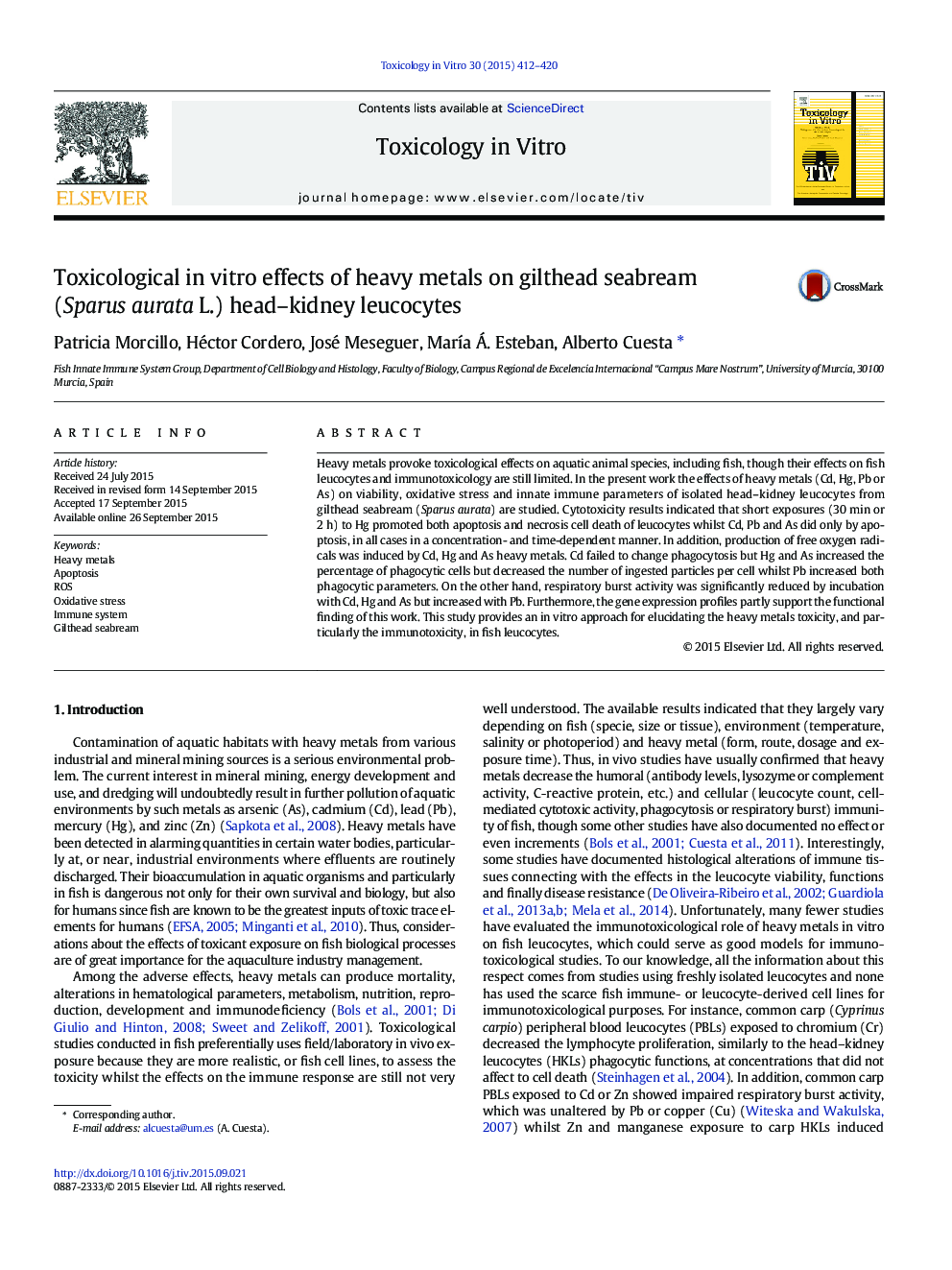| Article ID | Journal | Published Year | Pages | File Type |
|---|---|---|---|---|
| 2602425 | Toxicology in Vitro | 2015 | 9 Pages |
•Cd, As and Pb induced apoptosis in seabream head–kidney leucocytes but Hg did also necrosis.•Cd, As and Hg induced the production of ROS.•As, Pb and Hg induced the phagocytic ability but decreased the phagocytic capacity of seabream HKLs.•All heavy metals reduced the seabream leucocyte respiratory burst.•Heavy metals differently altered the expression of immune-related genes of seabream HKLs.
Heavy metals provoke toxicological effects on aquatic animal species, including fish, though their effects on fish leucocytes and immunotoxicology are still limited. In the present work the effects of heavy metals (Cd, Hg, Pb or As) on viability, oxidative stress and innate immune parameters of isolated head–kidney leucocytes from gilthead seabream (Sparus aurata) are studied. Cytotoxicity results indicated that short exposures (30 min or 2 h) to Hg promoted both apoptosis and necrosis cell death of leucocytes whilst Cd, Pb and As did only by apoptosis, in all cases in a concentration- and time-dependent manner. In addition, production of free oxygen radicals was induced by Cd, Hg and As heavy metals. Cd failed to change phagocytosis but Hg and As increased the percentage of phagocytic cells but decreased the number of ingested particles per cell whilst Pb increased both phagocytic parameters. On the other hand, respiratory burst activity was significantly reduced by incubation with Cd, Hg and As but increased with Pb. Furthermore, the gene expression profiles partly support the functional finding of this work. This study provides an in vitro approach for elucidating the heavy metals toxicity, and particularly the immunotoxicity, in fish leucocytes.
